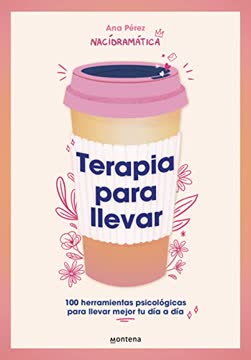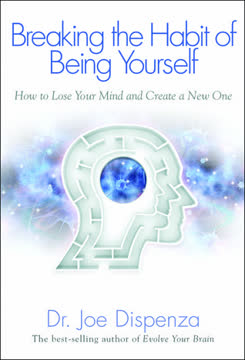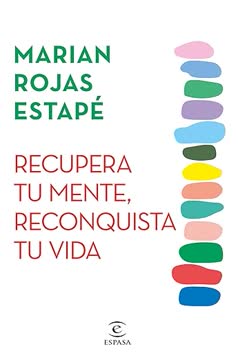重点摘要
1. 揭示家族创伤的隐藏语言
潜意识坚持、重复,几乎要破门而出,渴望被听见。
核心语言揭示遗传创伤。 我们*深的恐惧、反复出现的想法和无法解释的行为往往源于家族历史中未解决的创伤。这些创伤可以通过几代人传递下来,以我们可能未曾意识到的方式影响我们的生活。通过识别和解码我们的“核心语言”——那些承载情感重量的词语和短语——我们可以追溯这些遗传模式的起源。
科学证据支持跨代创伤。 近来的表观遗传学和神经科学研究表明,创伤经历可以改变基因表达,影响后代。例如:
- 大屠杀幸存者的子女表现出与其父母相似的应激激素水平变化
- 小鼠研究表明,恐惧反应可以通过DNA甲基化遗传
- 怀孕期间经历的创伤可以影响胎儿的大脑发育
意识是治愈的*步。 通过认识到我们的核心恐惧可能并非源自我们自己,我们可以开始解开自己与遗传家族创伤的纠缠。这种意识使我们能够重新框定我们的经历,并为个人成长和治愈开辟新的道路。
2. 认识核心句子如何塑造我们的恐惧和行为
你害怕进入的那个洞穴,恰恰是你寻找的源头。
核心句子揭示我们*深的恐惧。 这些简短、情感充沛的陈述通常以“我”或“他们”开头,表达我们*糟糕的情况。例子包括:
- “我会被抛弃”
- “他们会拒绝我”
- “我会失去一切”
识别核心句子解锁治愈。 通过大声说出我们的核心句子并感受其情感影响,我们可以追溯它们在家族历史中的起源。这个过程通常揭示了与创伤事件或前几代未解决问题的联系。
重新框定核心句子改变我们的生活。 一旦我们了解核心句子的来源,我们可以创造新的、治愈性的句子来支持我们的成长和福祉。这种视角的转变使我们能够摆脱从家族历史中继承的限制性信念和行为。
3. 理解早期与母亲分离的影响
你与痛苦、悲伤和未处理伤口的距离,就是你与伴侣的距离。
早期母婴分离影响终生的依附关系。 母亲与孩子之间早期纽带的中断——无论是身体上的还是情感上的——都可能对一个人形成安全依附关系和处理关系的能力产生持久影响。这些分离可能由于以下原因发生:
- 住院
- 产后抑郁
- 领养
- 影响母亲的创伤事件
认识分离创伤有助于治愈。 通过识别与早期分离相关的核心语言,个人可以开始理解其关系困难和焦虑的根源。常见主题包括对被抛弃的恐惧、难以信任他人和感觉不值得被爱。
重建母婴纽带治愈关系。 通过可视化练习、治愈句子和有意识地努力重建信任,个人可以修复早期的母婴纽带——即使母亲已经不在世。这个过程为更健康的关系和更大的情感稳定性打开了大门。
4. 识别影响关系的无意识家族忠诚
民间智慧充满了那些拒绝安息的幽灵,直到他们的故事被讲述。
无意识的忠诚塑造我们的关系模式。 我们常常在不知不觉中重复祖先的关系动态、挣扎和创伤。这些模式可以表现为:
- 难以承诺关系
- 反复选择与父母相似的伴侣
- 破坏自己的幸福以保持对家族痛苦的忠诚
家族图谱揭示隐藏的联系。 通过绘制我们的家谱并记录重要事件、创伤和关系模式,我们可以识别影响我们生活的无意识忠诚。这种视觉表示通常揭示了跨代的惊人相似性。
打破忠诚模式让我们自由去爱。 一旦我们认识到无意识的忠诚在起作用,我们可以有意识地选择打破这些模式。这可能包括:
- 承认和尊重过去的家族创伤
- 创建新的、健康的关系模式
- 允许自己比祖先更幸福
5. 打破限制成功的遗传模式
向外看的人做梦;向内看的人觉醒。
家族历史可能阻碍成功。 对于在经济上挣扎、商业失败或经历贫困的家族成员的无意识忠诚可能会限制我们自己取得成功的能力。这些模式可能表现为:
- 自我破坏
- 长期收入不足
- 害怕超越家族成员
识别阻碍成功的核心语言。 注意关于金钱、成功和自我价值的反复出现的想法和信念。常见主题包括:
- “我不配拥有比父母更多的东西”
- “成功会让我与家族不同”
- “我不够好,无法成功”
创造新的成功叙事。 一旦我们识别出从家族历史中继承的限制性信念,我们可以有意识地创造支持我们成功的新叙事。这可能包括:
- 承认和尊重祖先的挣扎
- 允许自己繁荣
- 将成功视为对家族牺牲的尊重
6. 创造治愈句子和转变仪式
想象是创造的开始。
治愈句子重写我们的内在剧本。 通过编写和重复直接应对我们核心恐惧的积极肯定语句,我们可以开始转变我们的信念和行为。例子包括:
- “我通过充分生活来尊重我的祖先”
- “我值得被爱和成功”
- “我释放不属于我的负担”
仪式巩固新信念。 简单、有意义的行动可以帮助整合我们的新理解并强化积极的变化。有效的仪式可能包括:
- 点燃蜡烛以纪念祖先
- 给已故家族成员写信
- 创建带有照片和有意义物品的家族祭坛
可视化利用想象的力量。 通过生动地想象积极的结果和与家族成员(无论是生者还是逝者)的支持性关系,我们可以创建支持治愈和成长的新神经通路。定期的可视化练习可以带来我们思想、情感和行为的持久变化。
7. 使用核心语言作为个人成长和治愈的工具
恐惧的秘密语言从来不是关于恐惧。更大的秘密是,一种伟大的爱一直在等待被挖掘。
核心语言是治愈的指南针。 通过关注我们*情感充沛的词语和短语,我们可以揭示塑造我们生活的隐藏创伤和未解决问题。这种意识为个人成长和治愈提供了路线图。
整合是持久变化的关键。 仅仅理解我们的核心语言是不够的;我们必须积极地将这种知识整合到我们的日常生活中。这个过程包括:
- 定期练习治愈句子和仪式
- 有意识地努力打破旧模式
- 在需要时寻求治疗师或支持小组的帮助
治愈波及几代人。 当我们治愈自己的遗传创伤时,我们创造的积极变化可以惠及后代。通过打破痛苦和限制的循环,我们为我们的孩子和孙辈提供了更健康的生活和关系基础。
最后更新日期:
FAQ
What's It Didn't Start with You about?
- Inherited Family Trauma: The book explores how emotional and psychological issues can be passed down through generations, affecting individuals even if they haven't directly experienced the original trauma.
- Core Language Approach: Mark Wolynn introduces a method to identify and understand the language of our fears and complaints, linking them to past family traumas.
- Healing and Reconnection: It provides pathways for healing by understanding and integrating these inherited traumas, aiming to break the cycle of suffering.
Why should I read It Didn't Start with You?
- Unique Perspective: The book offers a fresh view on mental health by focusing on the impact of family history on individual well-being.
- Practical Tools: Wolynn provides exercises to help readers identify their core language and connect it to family traumas, making the book applicable to real-life situations.
- Empowerment Through Understanding: Understanding inherited trauma empowers readers to heal and create healthier relationships, fostering freedom from past burdens.
What are the key takeaways of It Didn't Start with You?
- Trauma Can Be Inherited: Trauma can affect individuals across generations, challenging the idea that personal suffering is solely from one's own experiences.
- Core Language as a Tool: Identifying the language of fears and complaints can lead to insights about emotional struggles and their roots in family history.
- Healing Through Connection: Reconnecting with family members and understanding their stories is crucial for breaking the cycle of suffering.
What is the Core Language Approach in It Didn't Start with You?
- Understanding Core Language: This method helps individuals identify words and phrases that express their deepest fears, connecting them to family traumas.
- Mapping Emotional Pain: By mapping core language, individuals can uncover the origins of their pain and recognize inherited patterns.
- Facilitating Healing: It serves as a tool for healing by articulating fears and connecting them to family narratives, leading to emotional freedom.
How can I identify my core sentence from It Didn't Start with You?
- Reflect on Fears: Start by reflecting on your deepest fears or anxieties and ask, "What is the worst thing that could happen to me?"
- Articulate the Sentence: Formulate a simple, concise sentence that encapsulates this fear, such as "I will always be alone."
- Connect to Family History: Consider how this sentence might relate to your family history, providing context for your feelings.
What are some examples of inherited family trauma discussed in It Didn't Start with You?
- Jesse's Insomnia: Traced back to his uncle's traumatic death, revealing how Jesse unconsciously relived his uncle's fear of falling asleep.
- Gretchen's Depression: Linked to her grandmother's Holocaust experiences, showing how deeply family trauma can affect subsequent generations.
- Prak's Behavior: Mirrored his grandfather's trauma during the Khmer Rouge regime, highlighting how unresolved family trauma manifests in the next generation.
What exercises does It Didn't Start with You suggest for healing?
- Core Complaint Exercise: Identify core complaints by writing down deepest fears, uncovering language that connects current issues to family traumas.
- Describing Parents Exercise: Write descriptions of parents to explore feelings and recognize patterns influencing one's life.
- Visualization Techniques: Visualize family history to connect with emotions and experiences shaping one's life, facilitating healing.
What are the four unconscious themes that interrupt the flow of life according to It Didn't Start with You?
- Merging with a Parent: Occurs when a child takes on a parent's emotional struggles, leading to carrying burdens not their own.
- Rejecting a Parent: Judging or distancing from a parent creates a rift affecting emotional well-being, often from unresolved trauma.
- Break in Early Bond: Interruptions in early bonds with a mother can lead to anxiety and relationship difficulties later in life.
- Identification with Other Family Members: Individuals may carry unresolved traumas of other family members, repeating patterns of behavior.
What are some best quotes from It Didn't Start with You and what do they mean?
- “The past is never dead. It’s not even past.” Highlights that unresolved family traumas continue to affect present generations, stressing the need to address these issues.
- “Healing is an inside job.” Reflects the belief that true healing requires confronting and understanding family histories to break the trauma cycle.
- “The family story is our story.” Emphasizes the interconnectedness of family experiences in shaping individual identities, reinforcing the theme of inherited trauma.
How does It Didn't Start with You address the impact of historical trauma?
- Linking Personal and Collective Trauma: Discusses how historical traumas like the Holocaust affect descendants, manifesting in emotional struggles.
- Understanding Inherited Fears: Explains that current fears may be rooted in ancestors' traumas, aiding in understanding emotional responses.
- Encouraging Healing Across Generations: Advocates for acknowledging historical traumas to heal oneself and the family lineage, fostering connection.
What is the significance of the genogram in It Didn't Start with You?
- Visual Representation of Family History: A genogram maps family relationships and events, providing insights into inherited issues.
- Identifying Patterns: Helps identify recurring themes or traumas influencing one's life, aiding in understanding and healing.
- Facilitating Conversations: Serves as a starting point for family discussions about experiences and traumas, fostering understanding.
How can I apply the concepts from It Didn't Start with You in my life?
- Self-Reflection: Reflect on fears and emotional struggles, considering their relation to family history to identify core language.
- Engage in Healing Practices: Use exercises like visualization, writing healing sentences, and creating a genogram for personal growth.
- Seek Support: Discuss findings with a therapist familiar with the book's concepts for additional guidance and support.
评论
《这不是你的错》评价褒贬不一。一些人赞扬其对遗传创伤和表观遗传学的见解,认为对自我反思有帮助。然而,许多人批评作者过于强调与虐待父母和解,并缺乏科学证据。读者对书中的伪科学主张和对医学治疗的忽视表示担忧。尽管有些人认为书中的练习和核心语言概念有价值,但也有人警告说,特别是对于虐待幸存者,遵循作者的建议可能会带来潜在的伤害。总体而言,这本书在读者中引起了争议和两极分化。
Similar Books












